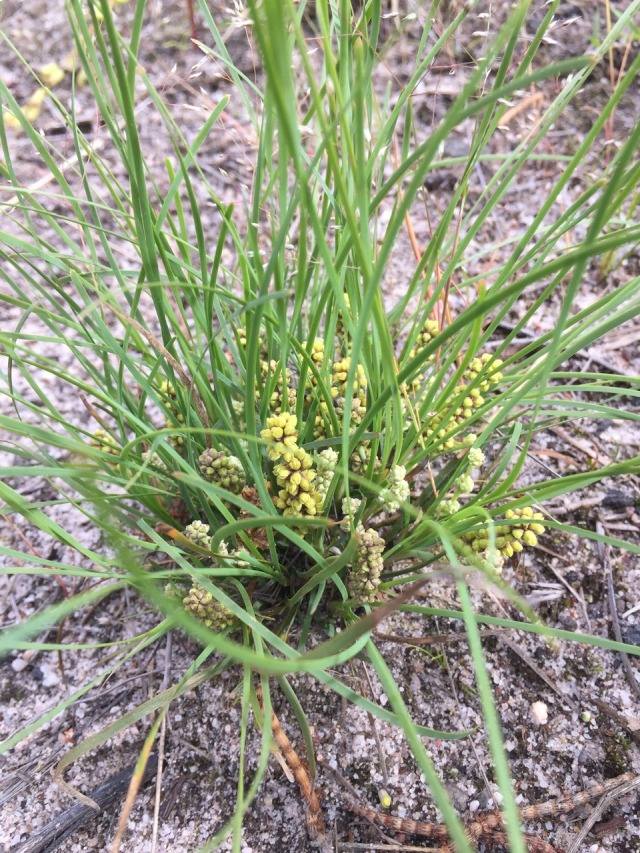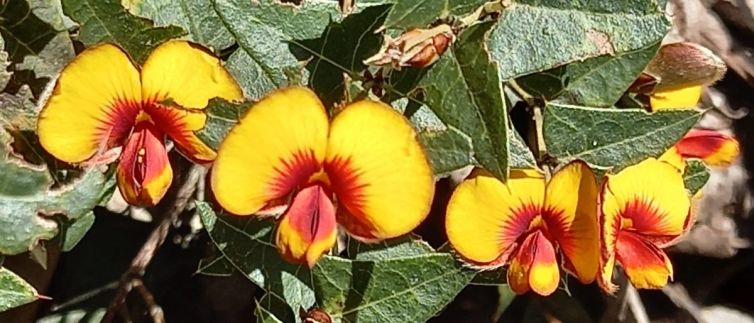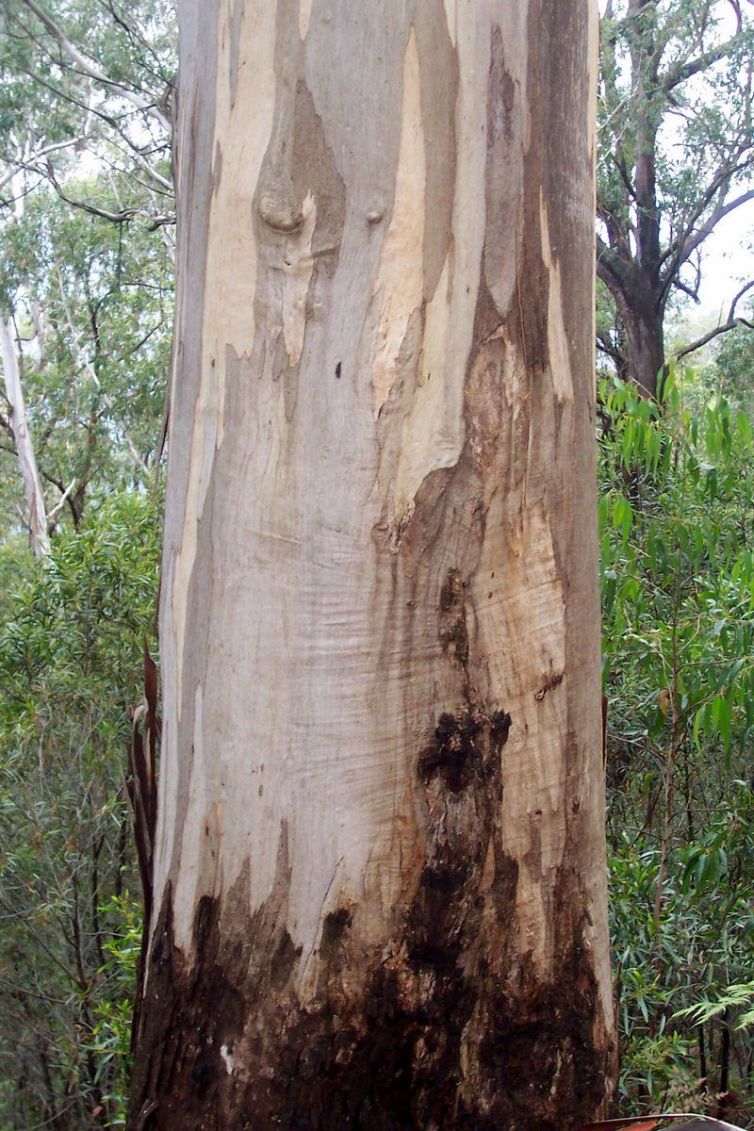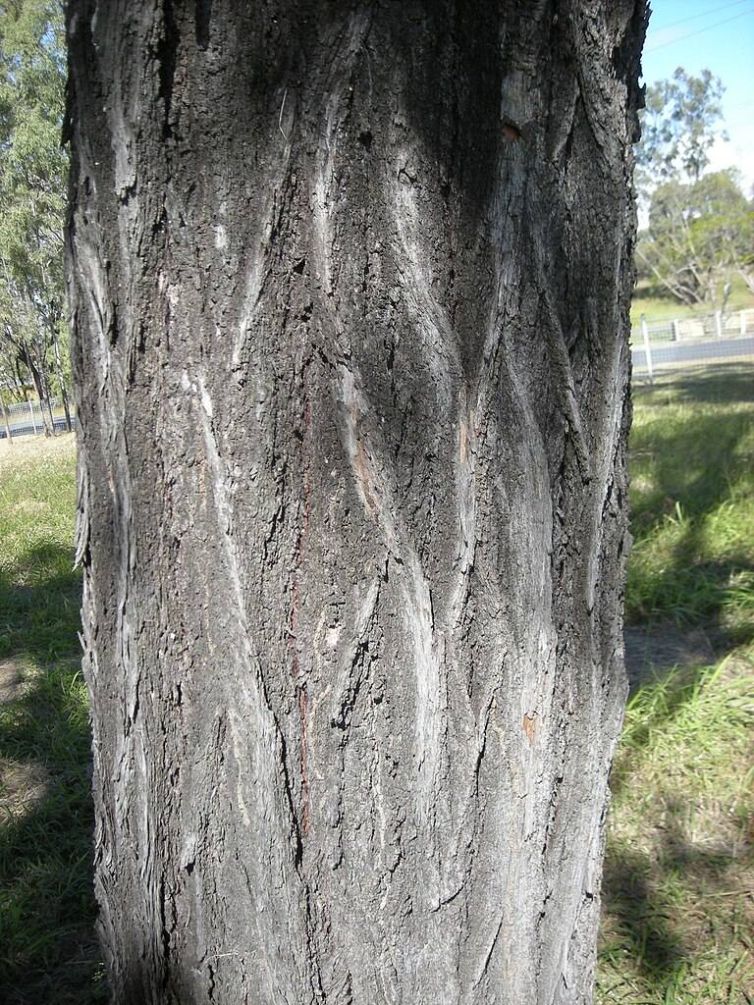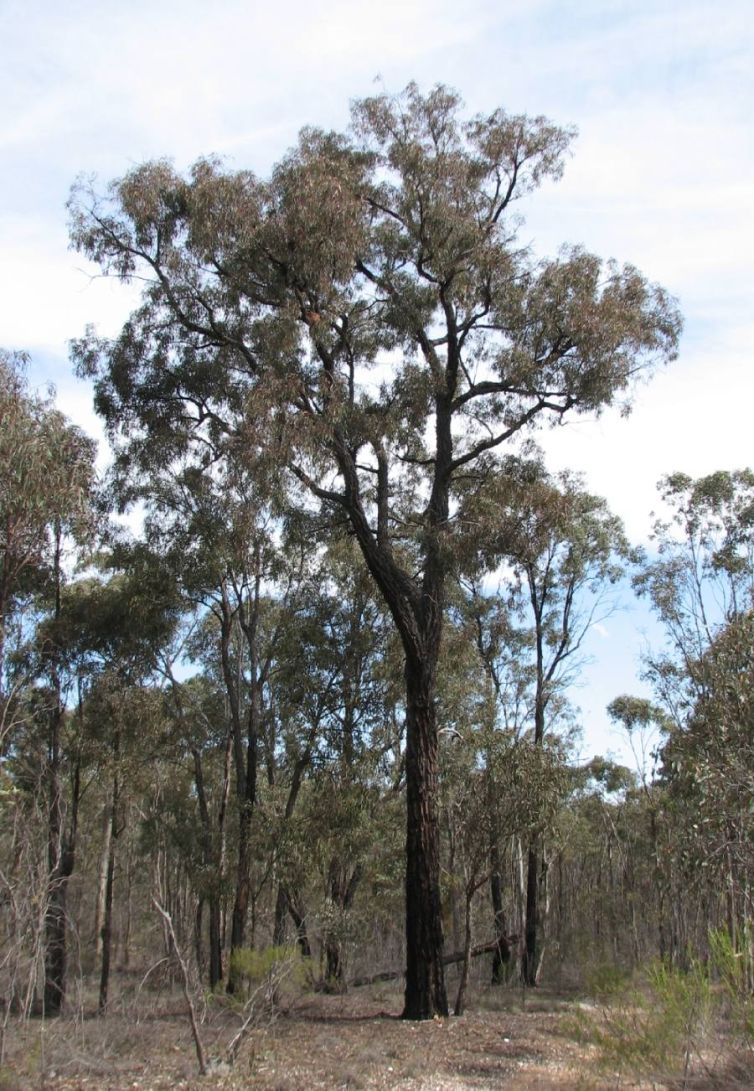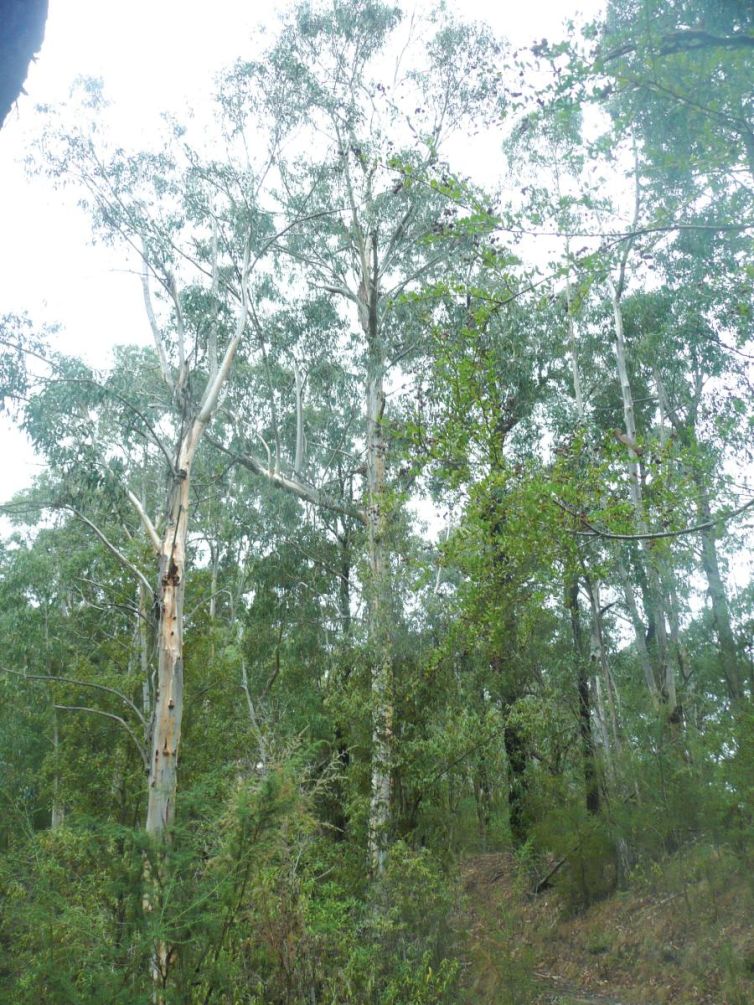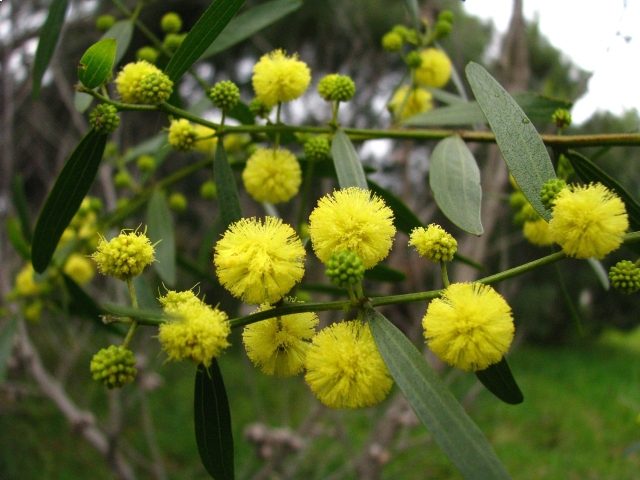You’re now walking into a mixed forest, with the tallest trees, the overstorey, made up of the Eucalyptus species, Mountain Grey-gum and Red Ironbark. No prizes for guessing which is which, the gum has smooth bark which sheds regularly in ribbons, whereas the ironbark has extremely solid bark that it retains throughout its whole life. In fact, the barks of these trees often still carry the charcoal from past bushfires, some from as long ago as Ash Wednesday in 1983!
The mid-layer of the forest is the realm of the Acacias, or commonly known as the Wattles. There are a number of these species here, including the spikey leaved Prickly Moses, and the sticky leaves of the Varnish Wattle – try rubbing your fingers against one of these shiny leaves for a while, as the resin glands break in the leaf they become very sticky!
On the ground level live an amazing variety of herbs, grasses, peas, and other plants that provide habitat for the smallest members of the forest ecosystem, such as small mammals and insects. The orchids are a beautiful feature here, so if you are walking through in spring, be sure to look for these exciting flowers!
Enjoy these pictures of the easiest to find trees, shrubs and small plants along the nature trail, why don’t you see how many of them you can find on your journey.
Prickly Moses (Photo by DavidFrancis34, CC BY)
Mountain Grey Gum (tree) (Photo by Margaret MacDonald)
You can scan the QR code at each of the following interpretive signs to learn more about the plants and wildlife in this area:
